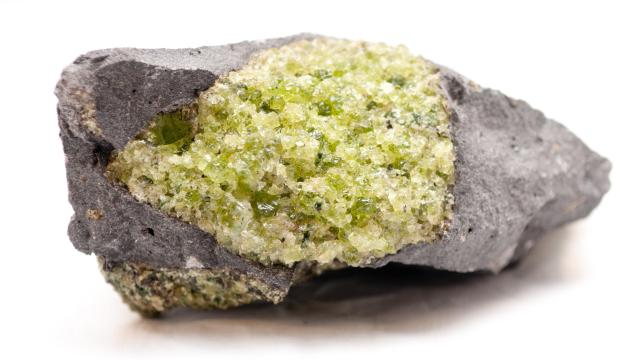Each September brings the annual Mineral Cup, a fierce competition to determine Twitter’s favourite mineral. This year’s contest is well underway, with kaolinite narrowly beating schorl in the first matchup.
In 2017, University of Hull geology professor Eddie Dempsey claimed that quartz was the best mineral after tweeting a picture of a geologic outcrop. His followers had some contrary opinions, and in order to prove himself right, the Mineral Cup was born. The Mineral Cup is an annual single-elimination tournament to determine which mineral reigns supreme. Mika McKinnon has took over Mineral Cup responsibilities in 2020 and, with the help of 25 volunteers across the world, has officially kicked off this year’s tournament.
“One of the reasons I love Mineral Cup is this ability for people to rediscover that joy and that connection, where they’re allowed to like rocks and to get enthusiastic without having to justify it,” McKinnon told me by phone. McKinnon is a disaster researcher, science communicator, and former Gizmodo staff writer. “This is definitely proof that rocks are for everybody, and you don’t need to be a certain level of knowledgeable in order to participate.”
Mineral Cup has grown year after year, racking up nearly 11,000 followers on its official Twitter account. “This is a hunch based on our interactions, but I would say that about a third of the people participating have some formal connection to geoscience, and two-thirds have zero connection to geoscience,” McKinnon said. “The vast majority of people have no geoscience background.” McKinnon explained that people cast votes for all sorts of reason — even if it’s as simple as the mineral’s name being cool.
ROUND 1 MATCH 1#MinCup2022 starts with extremes with #Schorl of team tourmaline vs #Kaolinite of team clay!
Hard or soft, dark or light, decorative or utilitarian: which is the better mineral?
Reply to persuade others, quote to recruit your friends, and vote!
— Mineral Cup #MinCup (@MineralCup) September 1, 2022
Yesterday marked the first day of the bracket, which features a total of 32 minerals. The first matchup was between schorl and kaolinite. Schorl is a black, semi-hard mineral typically found in granites and high-temperature hydrothermal veins, and while it doesn’t have much of a commercial purpose, it is sought out by collectors. Kaolinite (which won with 52.6% of the vote) is a soft, waxy mineral — typically white or soft yellow — and rocks that are rich in kaolinite can be used in porcelain, paper, cosmetics, and toothpaste.
Last year, the winner was a rare mineral named quetzacoatlite, a spindly blue crystal named after the god in Aztec folklore. Never heard of it? That’s fine, since there are over 5,000 minerals officially recognised by the International Mineral Association, with a few new ones being discovered every year. Mineral Cup chooses 16 new minerals each year to compete along with 16 of the previous year’s top contenders, to generate af bracket of 32 minerals.
McKinnon is rooting for sylvite this year, which she describes as a “close cousin” of halite (which you might know more commonly as salt). Sylvite, which you can safely lick, has a sour metallic taste, due to it being composed of potassium chloride. Cinnabar is also in the running, which is a gorgeous red mineral that happens to be loaded with mercury — so don’t lick that one.
As the Mineral Cup has continued to grow from around 200 votes per match in 2017 to 2,000 votes per match in 2021, the tournament is an awesome reminder of just how fun geoscience can truly be.
